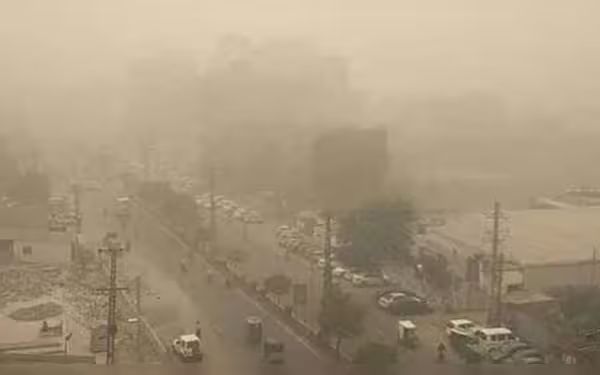Thursday, November 7, 2024 03:35 AM
Lahore Smog Crisis: Impact of Crop Burning
- Lahore faces severe smog due to crop burning in India.
- Health risks increase for vulnerable populations in Lahore.
- Experts predict prolonged poor air quality in the city.
 Image Credits: pakobserver.net
Image Credits: pakobserver.netLahore struggles with high smog levels due to crop burning in India, posing serious health risks.
In recent weeks, the city of Lahore has been grappling with alarmingly high levels of smog, a situation that has raised concerns among residents and health officials alike. Smog, a mixture of fog and smoke, is particularly prevalent during the winter months in Pakistan, but this year, the situation has been exacerbated by external factors. NASA has recently released satellite images that reveal a troubling trend: large-scale crop burning in various regions of India is significantly contributing to the deteriorating air quality in Lahore.
The practice of burning crops, often employed by farmers to clear fields after harvest, releases vast amounts of smoke and pollutants into the atmosphere. With strong winds carrying this smoke across the border, the air quality in Lahore has taken a turn for the worse. Residents are now facing a double whammy, as local pollution sources combine with the smoke from neighboring regions, creating a thick haze that blankets the city.
As the smog levels remain high, many are left wondering, "For how long will this situation persist?" Experts suggest that the smog may linger for several weeks, particularly if weather conditions do not change. The combination of stagnant air and ongoing crop burning in India means that the residents of Lahore could be facing a prolonged period of poor air quality. This is not just an environmental issue; it poses serious health risks, especially for vulnerable populations such as children, the elderly, and those with pre-existing health conditions.
In light of these developments, it is crucial for individuals to take precautions. Staying indoors during peak smog hours, using air purifiers, and wearing masks when going outside can help mitigate the effects of the polluted air. Additionally, it is essential for local authorities to address the root causes of pollution and work towards sustainable solutions that can prevent such crises in the future.
The smog situation in Lahore serves as a stark reminder of the interconnectedness of environmental issues across borders. As we navigate through these challenging times, it is imperative for both governments and citizens to collaborate in finding effective strategies to combat air pollution. Only through collective action can we hope to breathe easier and ensure a healthier future for all.













